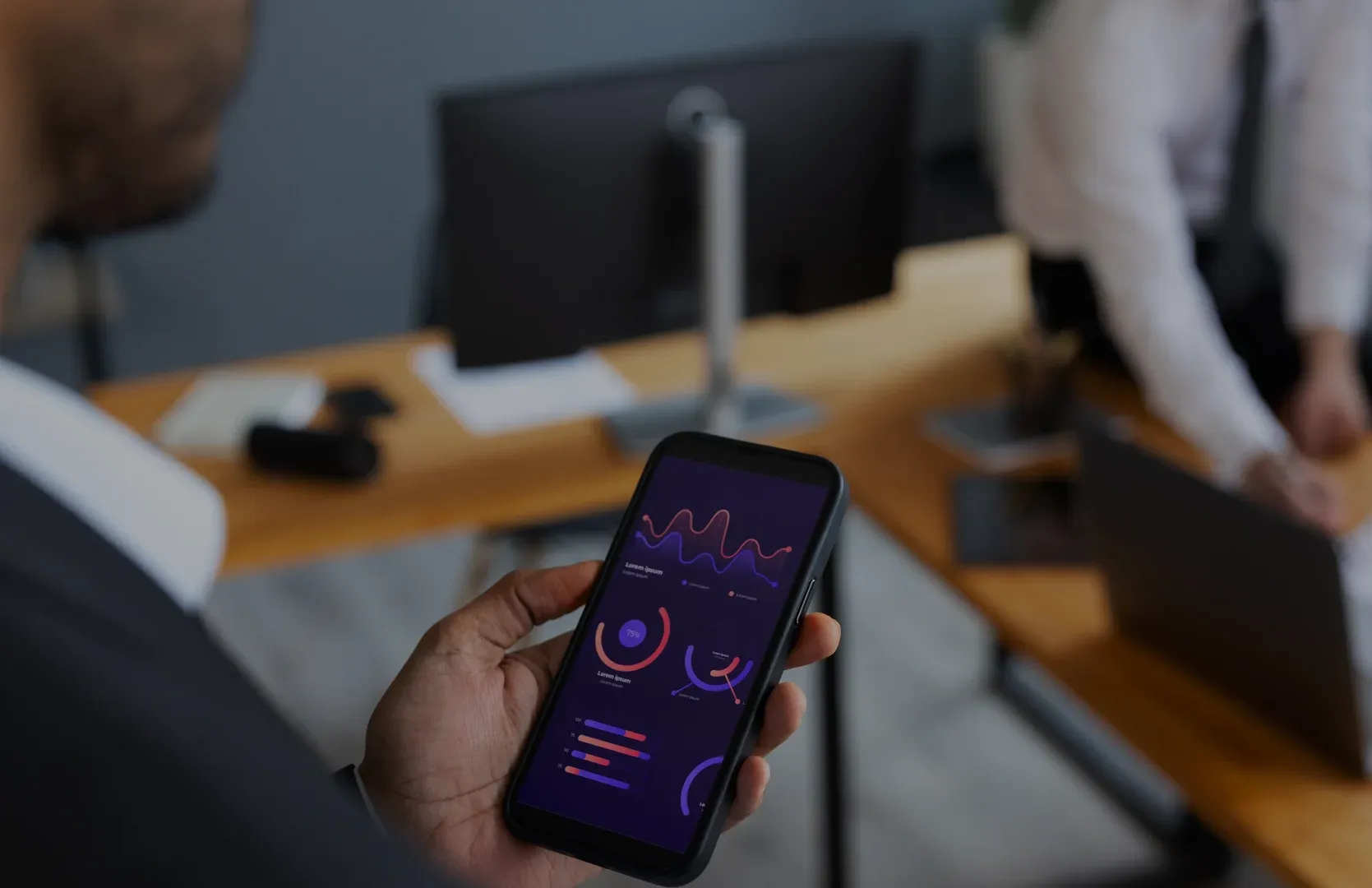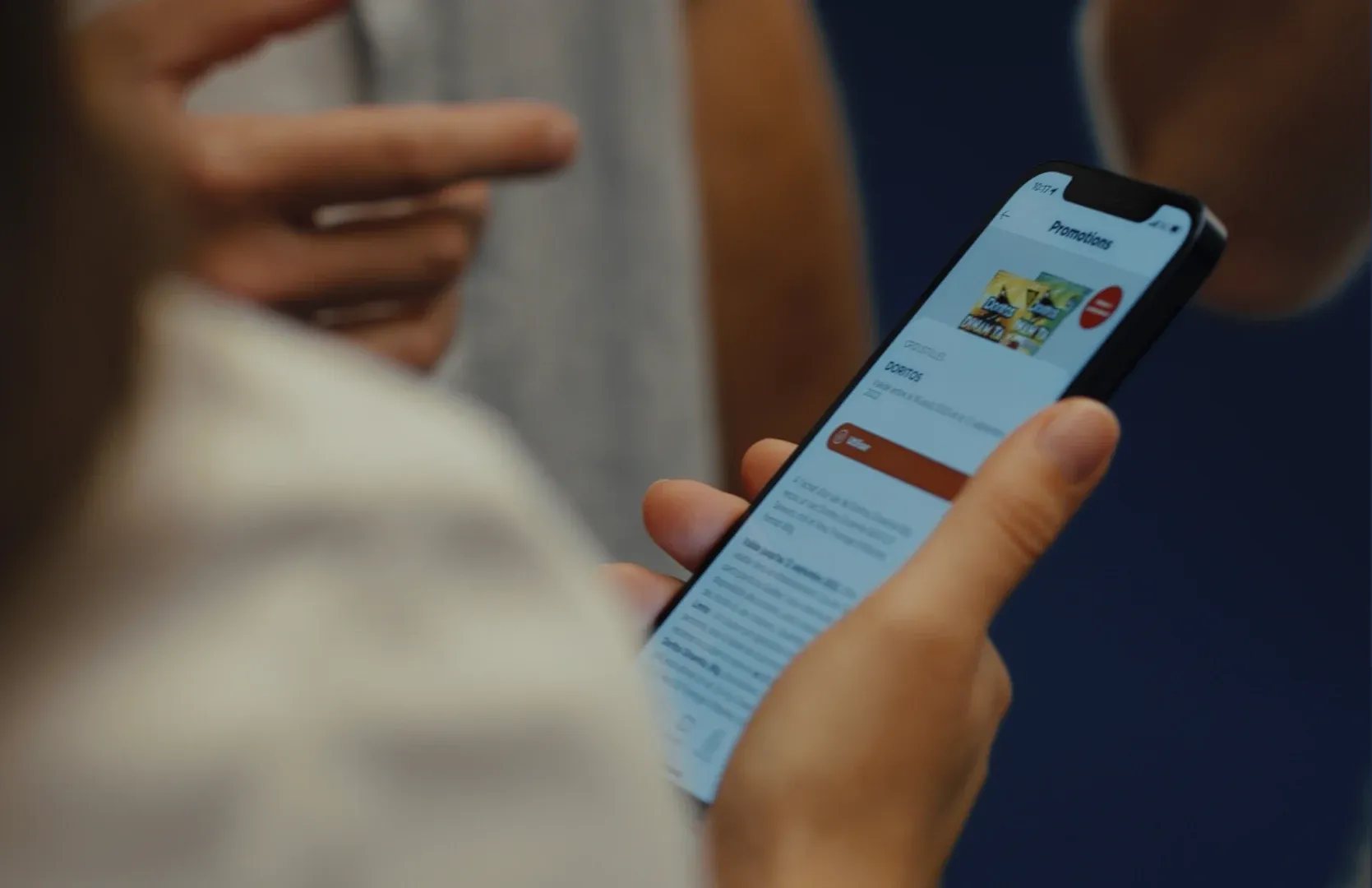.jpg)
Thirdbridge celebrates its 12th anniversary!
When our co-founders, Nicolas and Pierre-Étienne, embarked on their entrepreneurial journey with Thirdbridge, they were still in school. At that time, they had no idea of the extent of the successes, failures, but above all, the lessons they would learn a decade later.
Specializing in the design and development of mobile applications and custom software, Thirdbridge has supported numerous companies worldwide over the past 12 years.
After creating several dozen software products offering unique digital experiences, we thought it was time to share our best advice with you to make your app project a success.
1. Set and follow measurable and achievable goals
Before delving into any technical discussions about your project, clearly define its objectives. Whether it's saving time for your employees or enhancing your customers' experience, the ultimate goal with your app is to create real added value for those who will use it. Establishing specific goals from the outset will guide the development and implementation of the application and ensure that you never lose sight of what you really want to deliver to users.
2. Embed yourself in your target audience's daily life
The mobile application remains a privileged means to establish a close relationship with its users. In a world where app usage is high at all-time and the average time spent on mobile devices exceeds 5 hours per day, there is a unique opportunity to integrate it into consumers' daily lives. You just have to do it well.
3. Plan your budget adequately
Launching a software development project is an ambitious undertaking that requires a significant budget. Therefore, good planning is essential. On average, budget allocation involves allocating 10% to design, 15% to development and testing, 15% to project management, 10% to quality assurance, and 5% for contingency in case of unforeseen events that can occur in all projects in general !
4. Be strategic
- A well-established strategy guided by experts is the key to success. It starts with Understanding your organization's context, goals, and the target audience you intend to serve. Once you've gained a clear comprehension of the present scenario, ocus on the project strategy. Determine your approach to features, scheduling, and budget. Engage in a series of exercises to brainstorm and evaluate different strategies and opportunities.
5. Never neglect quality assurance
The amount of time and money deemed necessary to allocate to testing and quality assurance is rarely sufficient. This phase is crucial to ensure a final product without bugs and offering an optimal and hassle-free experience. It is therefore essential to pay special attention to it by investing resources to conduct rigorous tests and ensure optimal product quality.
6. Save time and money with hybrid development:
- Statistics don't lie: hybrid development is gaining popularity. Thirdbridge has been advocating for hybrid development for years. This saves time by using a single codebase for iOS and Android. This allows for a substantial 40 to 50% savings on development costs.
7. Be agile
To maximize your chances of success, avoid as much as possible overloaded deployments with new features or updates. Massive deployment often equals bugs. Be strategic and use a divide and conquer approach. Small, frequent deployments reduce risks and allow you to quickly readjust your priorities to maximize user satisfaction.
8. Appoint a single project manager
An application project typically involves many stakeholders. Avoid confusion by assigning project management and communication responsibilities to one person. If you involve too many members of your team in exchanges and approvals, misunderstandings, delays, and complications are likely to occur in the long term.
9. You can never give too much detail:
Communicate your expectations, boundaries, and priorities regarding the scope of your project transparently from the very beginning. Clear and unrestrained understanding promotes effective collaboration and minimizes the risk of confusion with development teams.
10. Stay abreast of the latest trends:
Rapid technological advancements can influence design choices, features to integrate, and user experience. Keeping an eye on trends will help you stay competitive, meet changing user expectations, and, by extension, make sound financial decisions for your business.
11. Integrate AI into your project
If you haven't considered it yet as of today, you're a little behind. Although not relevant in all cases, practical applications of artificial intelligence such as conversational agents and predictive models are becoming increasingly easier to integrate into our everyday applications. Thousands of pioneering applications worldwide added AI to their product in 2023, and this number will continue to rise in 2024. Don't miss the boat!
12. Maintenance is just as (if not more) important than development
Regular maintenance is crucial to ensure security, performance, and user satisfaction, thereby contributing to the reputation of your application and brand. Invest in continuous maintenance, regular improvement, and performance to remain competitive. This will also allow you to adapt to changing user needs and technological advancements.
After 12 years in the industry, we can humbly say that the advice of our co-founders has been tried, tested, and validated many times over. However, it must be acknowledged that there is no foolproof formula guaranteeing the success of a software project.
Nevertheless, one step remains essential, and this principle applies in all spheres of our lives: the importance of surrounding oneself with the right people. Whether you build an in-house team or seek the support of a development agency, the choice of individuals you collaborate with is crucial. They will have the greatest impact on the success of your project.
Other articles
.webp)



.webp)



Oct 15, 2024
Pierre-Étienne Bousquet guest of "Les Affaires"
Our president and co-founder, Pierre-Étienne Bousquet, discussed with Jean-François Venne from Les Affaires the significant growth of digital technology in the retail industry and its impact on online sales, which are becoming increasingly crucial for revenue.


.png)
Jun 14, 2024
Recruiting an In-House Team or Hiring an Agency for Developing Your Application?
When embarking on a project as significant and important as developing an application, a crucial dilemma quickly arises: choosing between a specialized agency or recruiting your own in-house team to accomplish the work. One thing is certain, both options present distinct advantages and constraints.


May 22, 2024
Optimizing Synergy with Your Software Development Partner
The digital realm, especially that of custom digital solution development, is constantly evolving—between fast technological advancements and changing consumer needs, it's quite challenging to predict what the future holds for web players.
.png)
.webp)
.webp)

.webp)
.webp)
Mar 31, 2025
Ratings & Reviews: Their Impact on an App's Success
An app’s success isn’t solely based on meticulous engineering or eye-catching designs. It’s crucial to deliver a product that is high-performing, accessible, useful, and user-friendly, alongside a go-to-market (GTM) strategy tailored to the digital product ecosystem.
.webp)










.png)
May 3, 2024
Simplified Infrastructures for Enhanced Agility
At Thirdbridge, we believe that project-oriented teams deliver superior quality results, and do so more quickly. Given that they are responsible for the entire value creation flow, these teams can increase their velocity by eliminating bottlenecks themselves. Moreover, entrusting end-to-end flow responsibility to our developer teams makes their work even more engaging and motivating.
.webp)



.webp)
.webp)

Oct 29, 2024
AI driving innovation: A new Era for Mobile Apps and User Experience
Artificial intelligence (AI) represents a digital transformation that impacts us all. This rapidly advancing technology, fueled by data analysis, not only enables informed decision-making and reliable forecasting but also allows for the completion of many tasks at a faster pace.

Oct 15, 2024
Enhancing Product Management: Key to Success in Software Development
The distinction between product management and project management is essential for ensuring optimal productivity. It’s not enough to treat them as interchangeable concepts; it’s crucial to adopt a proactive approach to place the right resources in the right places.

Sep 24, 2024
Cybersecurity and Mobile Applications: Choosing the Right Authentication Method
Mobile applications are essential tools that handle personal data, access sensitive information, and are part of our daily lives. However, in an age where the term cybersecurity is on everyone's lips, ensuring the security of these applications and the information they contain is crucial.
.webp)


.png)


.webp)




